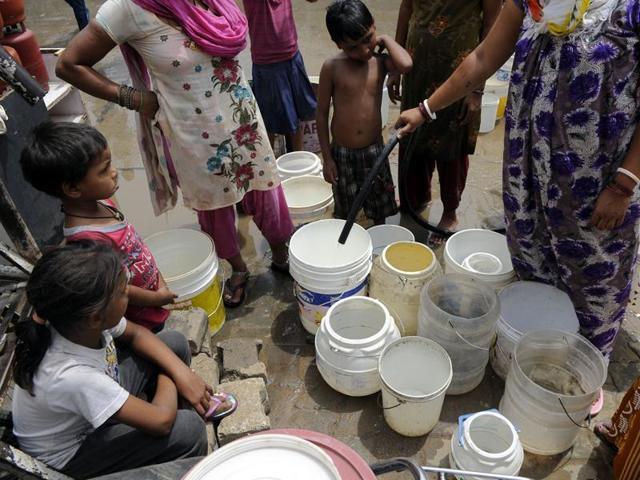Water table continues to decline at alarming rate
Rapid urbanisation, constantly increasing water demand and inadequate rainwater harvesting systems have resulted in the city’s groundwater levels declining by three metres from last year
Gurgaon

It may be puzzling to outsiders that a city from which constant waterlogging related troubles are reported during the pre-monsoon and monsoon showers has a rapidly depleting groundwater table.
However, owing to rapid urbanisation, constantly increasing water demand and inadequate rainwater harvesting systems, the city’s groundwater levels have declined at an alarming rate. It dropped by three metres from last year as per data from the district groundwater cell.
A study conducted by the Centre for Science and Environment placed Gurgaon’s groundwater table at 30 metres in 1995. In 2010, it dropped to 40 metres. As per the latest figures, the water table has dropped below 50 metres in some areas such as DLF Phase 4 and DLF Phase 3.
Since 2011, the city has been in the dark zone category -- an area in which the groundwater table has receded below recoupable limits and infers that no boring can take place without the approval of authorities concerned. Authorities can seal or shut down illegal tubewells in the dark zone category under the Environment (Protection) Act, 1986.
An official of the Municipal Corporation of Gurgaon attributed the rapid depletion in water table to the city’s growing water demand and over dependence on groundwater to overcome the crisis.
An official said the city receives 70 million gallons per day (MGD) water daily. But, there remains a huge gap between the demand and supply as at least 15 MGD more water is needed to fulfil the demand of a population of nearly 20 lakh. This gap is filled through illegal groundwater extraction.
A 2007 order by the Punjab and Haryana High Court had banned digging borewells and groundwater extraction in Gurgaon. But an MCG official conceded that the order has been flouted constantly.
As per MCG data, there are more than 11,000 registered borewells in the city. But officials estimate that approximately 15,000 illegal borewells and tubewells are also being operated.
Environmentalists claim the issue of plummeting water table is being overemphasized. They highlight the need to treat sewage water and replenish water supply through rainwater harvesting.
“During monsoon, around 7,000 cusec water flows into Najafgarh drain and if treated, it can suffice nearly half the city’s water demand and stop the dependency on groundwater significantly. An initiative by the state government to put basic scientific tools and machinery in place can absolve this crisis,” Nitya Jacob, a leading water expert, said.
Stay updated with all the Breaking News and Latest News from Mumbai. Click here for comprehensive coverage of top Cities including Bengaluru, Delhi, Hyderabad, and more across India along with Stay informed on the latest happenings in World News.
Stay updated with all the Breaking News and Latest News from Mumbai. Click here for comprehensive coverage of top Cities including Bengaluru, Delhi, Hyderabad, and more across India along with Stay informed on the latest happenings in World News.





